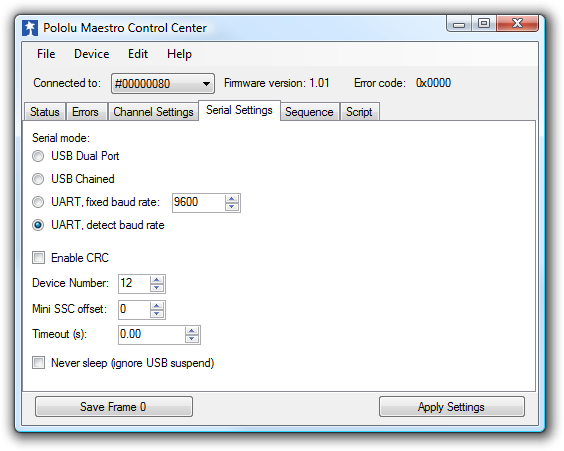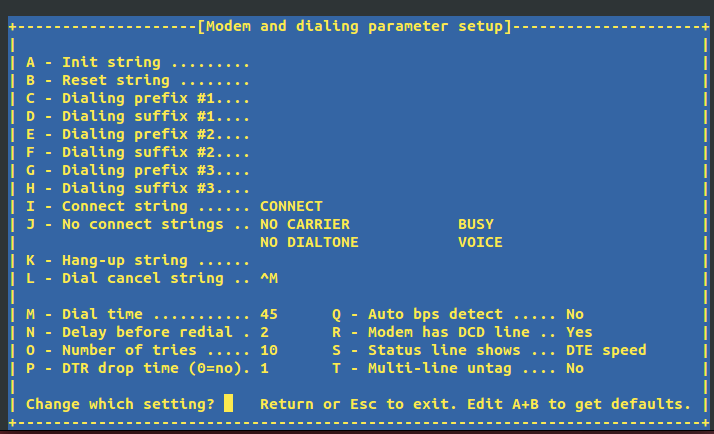
Jan 16, 2013 Defines a list of commonly supported serial communication rates (baud rates). One baud signifies one pulse per second. Namespace: System.IO.Ports Assembly: Microsoft.SPOT.Hardware (in Microsoft.SPOT.Hardware.dll) Syntax 'Declaration Public Enumeration BaudRate public enum BaudRate public enum class BaudRate type BaudRate public enum BaudRate. NOTE: Docklight tries to align the baud rate / bit timing results to a standard serial baud rates like 115200. But by design and due to usual tolerances of the baud rate generator in serial devices, there can be deviations and unusual/nonstandard values can appear. A +/- 3% tolerance window is usually within specs and not a mistake. Automatically Detecting Serial Baud Rate As discussed on the prior page, the transmitter and receiver each needs to be within 2% of the agreed bps/baud rate to ensure accurate serial communication. Usually this means pre-programming or configuring the rate in both devices, and using either an individually compensated oscillator or a crystal. May 01, 2018 The Tunnel Mode for the For Loop is set to 'Last Value'. You are only seeing the results of 57600 baud rate case. Since the correct baud is 38400, I would expect that the last value to be gibberish. Try changing the tunnel mode to 'Indexing'. Then you will be able to see all the results from all the cases.
To change the baud rate setting for a PubSub+ appliance’s RS-232 serial console port, enter the following commands:
solace# configure
solace(configure)# console baud-rate <baud-rate>
Where:
Serial Baud Rate
baud-rate is the desired baud rate setting for the RS-232 serial console port in bits per second (bps). Valid values are 110, 300, 1200, 2400, 4800, 9600, 19200, 38400, 57600, or 115200. The default value is 115200 on Solace PubSub+ 3260, 3530, and 3560.
To view the baud rate used for the RS-232 serial console port, enter the show console command. Note that this command does not apply to PubSub+ software event brokers.

The console has the following RS-232 configuration:

- 8 data bits
- 0 parity bits (turn Parity checking off)
- 1 stop bit (RS232 allows 1, 1.5 and 2)
- No flow control
- Baud rate configurable
The baud rate setting of the RS-232 connection is affected by the length of the cable used between the appliance and the datacenter terminal server. The higher the baud rate, the shorter the cable length. The default 115,200 baud rate setting is designed for a shorter cable length to the ‘top of rack’ terminal server found in newer data centres. For data centres where larger terminal servers are deployed that serve a suite of racks, the default setting should be changed to allow longer cables and reliable communication. The value of 9,600 is a standard terminal server speed for such terminal server/console deployment style.
Note that both ends of the RS232 connection must have the same configuration.
For more information on baud rate and how it relates to bit rate, refer to this blog post.

In another posting the thought came up that having a automatic baud rate detector function could be a useful thing to have in ones bag of tools. I’m still learning C, so I know this is not a bullet proof function, but rather something to get those interested in such a function to look it over and offer improvements or come up with a better version.
This sketch contains the function and a simple demo that runs in the setup section of the sketch. The function when called measures data bit widths and then selects the most likely standard speed for that width. I tested it using the ‘U’ character as it contains alternating ones and zero data bits. No doubt this function could be fooled by characters starting with multiple consecutive zero bits. The new line character also seems to work reliably as a sensing character.
Feedback welcome.

Detect Serial Baud Rate Code
Lefty